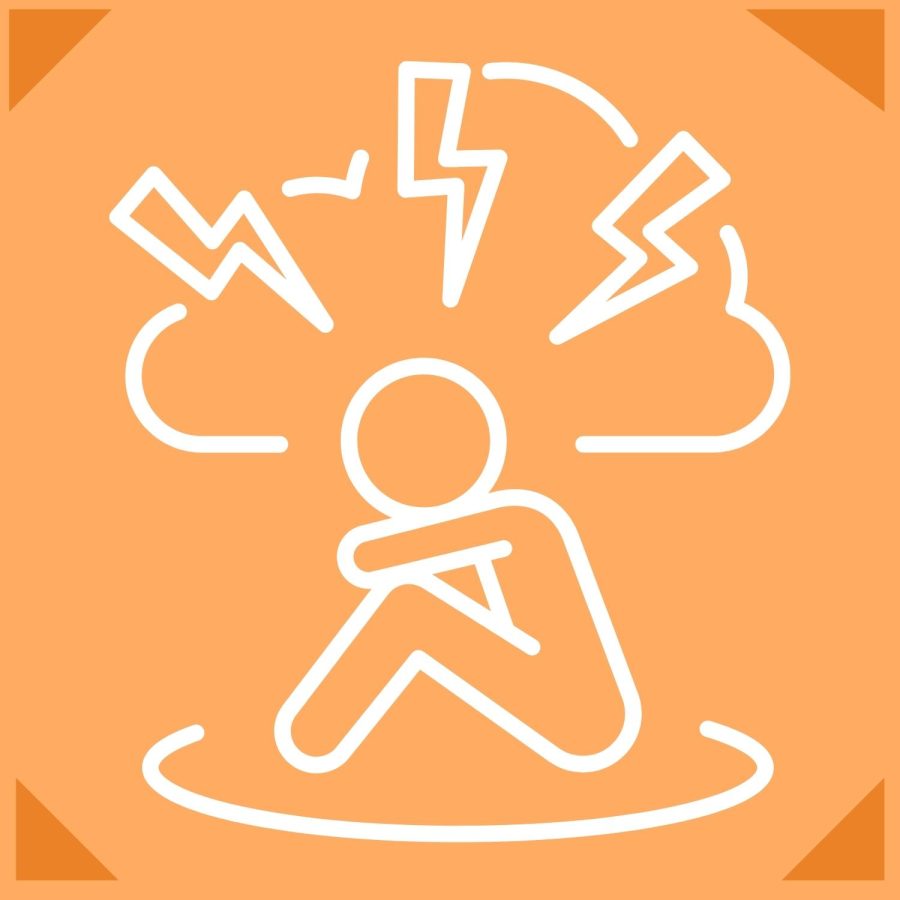Eating Disorders- High Schoolers
Image depicting a student experiencing an eating disorder created by Paulina Ilina
May 22, 2022
If you recognize any of this behavior, please contact your counselor and/or a trusted friend/adult.
About 4 percent of 13 to 18 year old adolescents will end up with an eating disorder. It means that in a school of almost 2,000 kids, 80 of those teenagers could have had any type of disfigured eating.
50 percent of these children will then go on to develop another form of an eating disorder. However, the average amount of money spent on disordered eating research is 93 cents, while Autism research gets $44 per affected individual, Schizophrenia research spends $81 per affected individual, and finally $88 is spent on Alzheimer’s disease research per affected individual. 50 percent of teenage girls and 30 percent of teenage boys have used unhealthy diet techniques. That means that in a class of 20 girls and 20 boys, 10 of those girls and 6 of the boys could have been on the brink of an eating disorder.
These may seem just like numbers, but when put into perspective, they get more real. Up to 20 percent of kids with an eating disorder will die without proper treatment and evaluation, so out of 80 affected students, 16 would be dead.
“Having an eating disorder was incredibly difficult. People don’t understand it. A lot of people assume you look a certain way when you have one. You can only get it a certain way. And in reality, everyone can get one. You don’t even understand that some people don’t show symptoms of an eating disorder. But if you look at the definition, it’s just any unhealthy relationship with food and a lot of the times it’s caused by another person, and you don’t even realize what you’re doing until it’s too late.”- Anonymous
Although many different explanations for the development of eating disorders have been proposed, they share one central feature: a dissatisfaction with their body image and body weight. Such dissatisfaction is created by distorted thinking, including perfectionistic beliefs, unreasonable demands for self-control, and excessive self-criticism. This dissatisfaction leads to dysfunctional attitudes towards eating, such as fear of food, preoccupation with certain food types, and picky-eating.
“[What caused my eating disorder was] comments about my body when I was little. I was a little bit of a chunkier kid and people would make comments that they didn’t even think would harm me. But slowly those things started to build and I went from just eating because I mean, it’s fuel for your body to thinking about oh, I shouldn’t eat that because then I’ll look ugly, then I’ll be big”- Anonymous
Another major problem for teens is suffering from an extremely stressful school environment. It directly leads to unhealthy eating habits (for example, reduced lunch time, unhealthy and not fresh food in the cafeteria, overwhelming and senseless class, and tons of homework). Those habits, in turn, cause real damage to the body, but teens have no option other than not to eat and to struggle with that problem, and – voila, welcome to the world of the eating disorders!
To manage stress and prevent eating disorders you can do the following:
- Deep-breathing exercise: Deep breathing exercises can assist in de-stressing. This alongside a solid sleep routine, healthy eating habits, and regular exercise help counteract stress.
- Support: Maintain a support system of trusted friends and family. Discuss with them concerns and talk to them about any concerns and current problems. Alongside that, a therapist can help with additional support.
- Physical activity: Go out on a walk or hit the gym when symptoms of stress come up. Exercise has been proven to bring out a good mood.
- Positive mindset: At the end of each day, take a moment to think about what you’ve accomplished, not what you didn’t get done, to really put everything in a constructive light.
- Short-term goals: Set goals for your day, week, and month and strive to achieve them in a practical manner. Narrowing your view will help you feel more in control of the moment and long-term tasks
- Meditation: Meditation has been shown to lead to small to moderate reductions of multiple negative dimensions of stress, such as anxiety, depression, and pain.
- Aromatherapy: Aromatherapy with essential oils like lavender, frankincense, and chamomile can help reduce stress and improve sleep quality.
All information is taken from <All 12 types of eating disorders>. Please consult with a medical professional to receive a proper diagnosis. Please also remember there are many types and sub-types of eating disorders and it is OK if you do not fit one mold.
The most common four eating disorders are the following:
Anorexia Nervosa has been dubbed the deadliest and most common eating disorder of them all. It is the one that many people can identify. To prevent weight gain or to continue losing weight, people with anorexia usually severely restrict the amount of food they eat. They may control calorie intake by vomiting after eating or by misusing laxatives, diet aids, diuretics or enemas. They may also try to lose weight by exercising excessively. No matter how much weight is lost, the person continues to fear weight gain.
A person suffering from Bulimia engages in recurrent episodes of binge eating followed by purging. During a binge, a bulimic person may consume anywhere from 1,000 to 60,000 calories within a few hours. This is followed by an attempt to get rid of the food by purging, usually by vomiting or using laxatives or diuretics. During a binge, people with bulimia feel as though they have lost control and cannot stop or limit how much they eat. Binges may be triggered by a major life change and other stressful events. Binge eating and purging may become a way of dealing with difficult feelings such as anger and disappointment. Bulimia is very difficult to recognize because sufferers conceal their eating habits.
It is characterized by uncontrollable eating without any compensatory purging behaviors. Common eating patterns include eating more rapidly than normal, eating until uncomfortably full, eating when not hungry, and preferring to eat alone. Uncontrolled eating is usually followed by weight gain and feelings of guilt, shame, and deep depression. Compulsive overeaters rarely eat because of hunger. Instead, food is used as a means of coping with school stress, conflicts with peers and adults, and other difficult emotions.
Body Dysmorphic disorder is a mental health condition in which the person can not stop thinking about one or more perceived flaws in their appearance. This flaw will usually be minor and is not visible to others. However, the person may be embarrassed, anxious or ashamed about being seen by other people. People with Body Dysmorphia regularly check in the mirror, focus on their appearance and body, grooming or asking others for reassurance about their appearance, sometimes for hours a day. This perceived flaw causes them extreme distress and panic and leads them to not function properly during the day.
Other symptoms of eating disorders include:
- Changes in appearance – a person may look sick or tired, hair and skin may appear sallow or dry.
- Toothbrush is worn down – this is specific to bulimics because these patients tend to brush their teeth more than twice a day.
- Unusual eating habits.
- Marks on knuckles – bulimics may have bruises, sores or scars from purging.
- Complaints of dizziness – this can be caused by dehydration or low blood sugar.
- Purging at all hours.
- Grocery store habits are strange – no regular schedule or food selection.
- Measurements – always using a scale or measuring tape.
- Exercise schedule – very strict and no straying from it.
- Using diet pills.
The treatment of eating disorders in a serious, not mild form, first involves averting a medical crisis by restoring adequate body weight, like when treating Anorexia nervosa, Bulimia nervosa, or Binge-eating. Then the psychological aspects of the problem can be addressed.
Expect that the person who is of concern may deny there is a problem, minimize it, or become angry. Also avoid giving simplistic advice about eating habits. Instead, your friend should be encouraged to eat properly, and support and understanding of their situation must be clearly expressed. Please continue to love and support your friend during recovery from an eating disorder as it is a long and complicated process.



